Current development applications in combination with a full build-out on Gospel Rock and the George Hotel will over-tax the aquifer
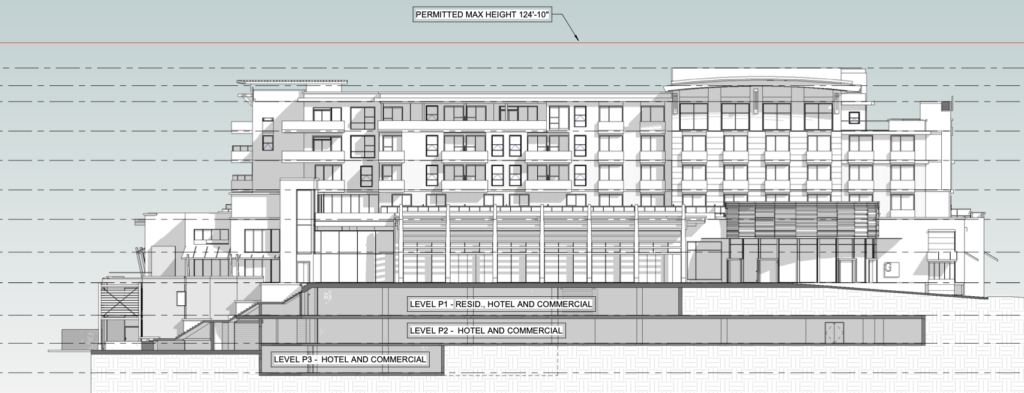
(By News Desk)
The Town of Gibsons is reviewing development applications for a total of 281 new housing units. Also proposed is a small inn (at Stonehurst) and the 111-room George Hotel. The hotel alone would use almost 27 million litres of water a year, the equivalent of 147 households.
Can the aquifer sustain such developments?
When the Town asked Waterline Resources Inc. to update its 2013 Gibsons aquifer study, the new data showed that the aquifer can sustain 10,000 people “at low or moderate risk.”
In reports to council, town staff has used a number of 2.3 as the average household size in Gibsons. Ten thousand people divided by 2.3 means the aquifer can sustain 4,347 households.
This is the “golden number” that cannot be exceeded.
According to Statistics Canada, there were 2,482 housing units in Gibsons in 2021. At the same time, 862 units were under construction, awaiting construction, or well advanced in a zoning process. The total of 3,344 units left 1,003 new dwellings for the future.
But if council approves the present applications for 281 units, and Gospel Rock is fully developed according to the Gospel Rock Neighbourhood Plan which allows for another 743 units, that would mean 1,024 more new units, 21 more than the aquifer can supply.
But there is more. The 111-room George Hotel, not included in the unit counting yet, would use the same amount of water as 147 Gibsons households per year.
Where does this figure come from?
A few months ago, developer Klaus Fuerniss re-applied for a development permit for form and character for 39 condo’s and the George Hotel. Town staff is reviewing the application and will send a report to council early next year.
The plans include an indoor pool, a spa and a water feature. According to international data, the average 4-star hotel with such amenities and a restaurant uses about 946 litres of water per room per day.
Sunshine Coast Tourism told The Coast Clarion that the average yearly occupancy rate of hotels on the lower Sunshine Coast is 70 per cent. Applied to the George hotel, this would mean 73,910 liters of water per day, more than 26.9 million (26,977,150) liters per year.
Town staff told The Coast Clarion the average household in Gibsons uses 183,000 litres of water per year. This means that the George hotel would use the same amount of water as 147 households. (26,977,150 divided by 183,000)
If the current applications are approved, the hotel is built and the entire Gospel Rock development takes place, the aquifer will fall short of the needs of 168 households. (21 plus 147)
It will also mean the end of all new developments in Gibsons, for perpetuity.
That does not bode well for badly-needed affordable housing.
The current applications for 281 dwellings include just 28 units of affordable housing. The cost of developing on Gospel Rock makes it unlikely there will be many affordable units there, if any.
The above figures do not include commercial use of water. If something were to happen to the aquifer, the Town were to allow industries that use a lot of water, or droughts affect the re-supply of the aquifer, year-round water restrictions could become a way of life.
Interesting reading: Town can terminate developments even after approval — without compensation
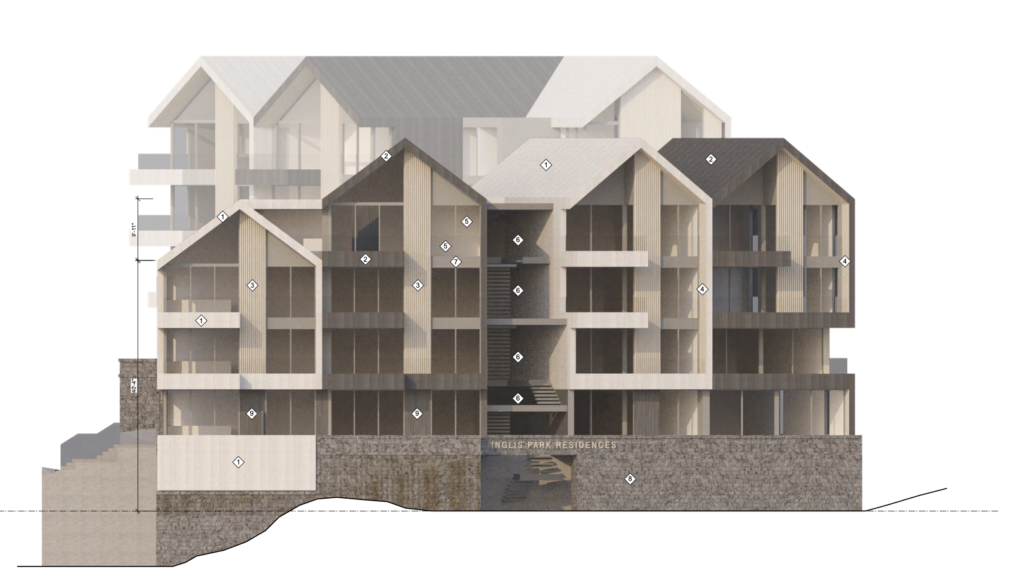
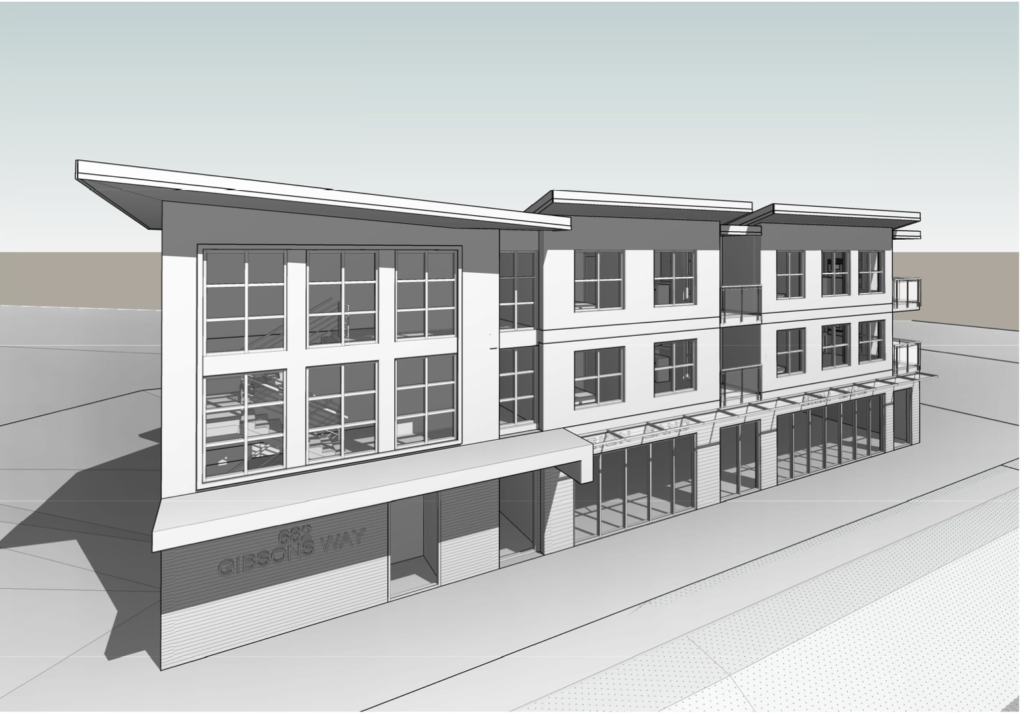

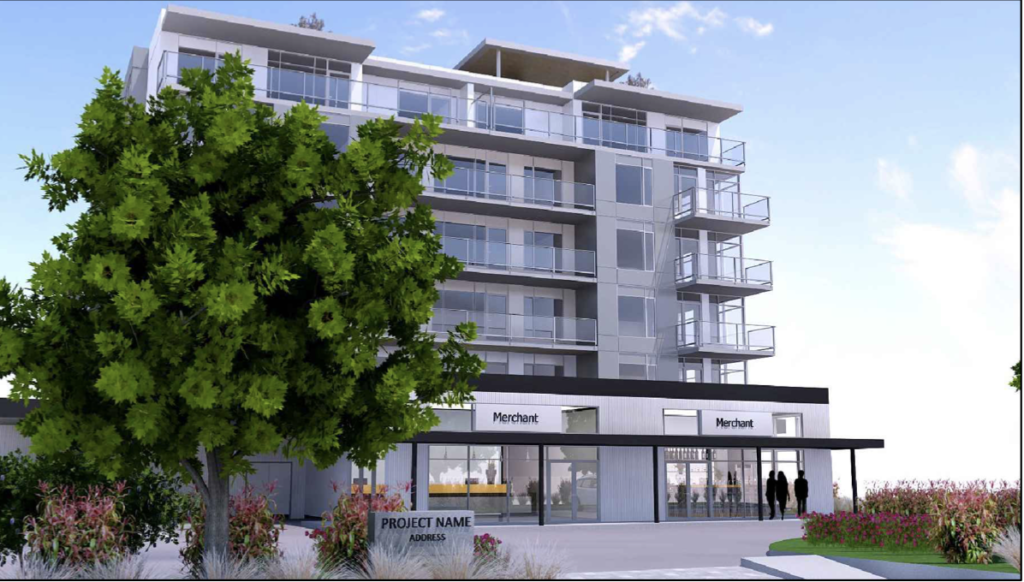
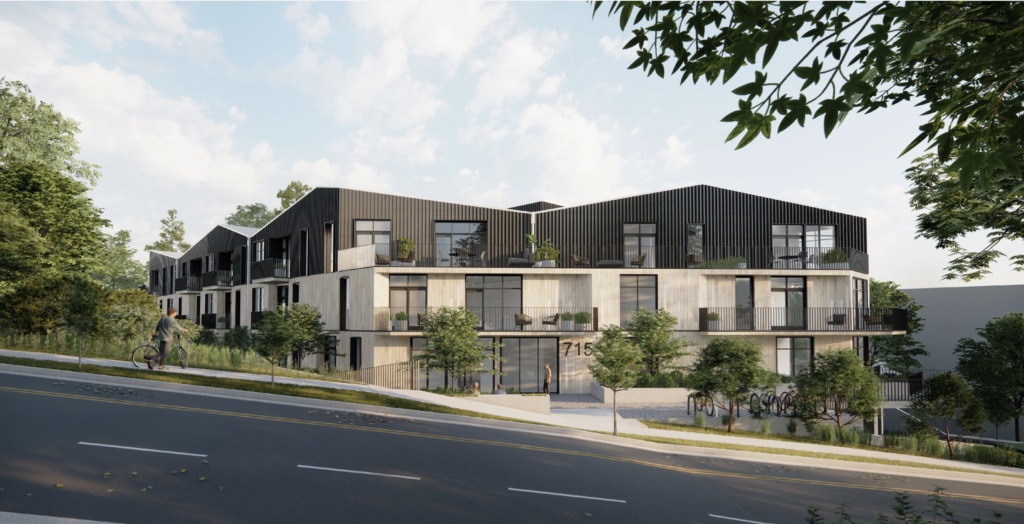
Well, is not the figure of 10,000 in error? I refer to the October 2, 2018 article in the Coast Clarion https://www.coastclarion.ca/the-gibsons-aquifer-cannot-support-10000-residents-as-some-think/
which gave the actual figure of total number of residents that the aquifer can support as 7,300.
I also note that there was input from a local resident expert who did the math as well but when he submitted his well-researched documentation to the Town, the CAO berated him and told him that his figures were wrong. I could never understand how they were wrong since they relied on simple arithmetic not rocket science.
Yes I agree with his assessment.
And the ongoing logging of ‘mature’ and stands with old growth and old growth characteristics is also a big impact on the water supply.
I believe the property where Wheatberries Bakery & [the now closed] Absolutely Thai place are at 818 Gibsons Way have also been bought with a view to developing residential units although they have not yet submitted a development plan to the Town. This area is much larger than the Irwin Motel so could add significantly more water users.
What I find encouraging, and not at all surprising is that using different analysis methods the results are remarkably similar. It is not an uncommon practice to crosscheck analysis with a variety of applications and compare the results. If the outputs are similar, it satisfies the condition of replication.
Consider this validated. Now, what is required to correct what is a disaster by our own design?
My comment is that consideration of new developments should be suspended until water supply and other climate impacted infrastructure improvements are evaluated, designed, funded and under construction.
There is no response to my letter of 29th November 2022 to Mayor Silas White and Councillors about the $1,600 million Federal Climate Adaptation Strategy:
“Last Thursday the Federal Government released Canada’s first Climate Adaptation Strategy committing $1.6 billion to help communities adjust to the worst impacts of climate change. The CBC program The Current interviewed Blair Feltmate who is Head of the Intact Centre on Climate Adaptation at the University of Waterloo.
Gibsons needs assistance to plan, design, and build for adaptation to sea level rise that will impact 500 moored vessels, 100 sea front residences, harbour businesses, future developments and land use, town owned structures and utilities, as well as the federal docks and breakwaters. .
Together with its neighbouring communities Gibsons also needs assistance to plan, design, and build systems and storage infrastructure to improve utilization of available water sources to sustain the supply for homes, commerce, industry and firefighting under climate change conditions like the recent drought of 100 days that produced a Sunshine Coast Region wide water crisis.” (which continues)
John, I have to agree with you. I have been tracking this for a number of years and there doesn’t appear to be a plan of any kind. Every development permit application is a one-off presented to the council that typically increases unit density and doesn’t include a risk assessment of the sustainable carrying capacity impacts or our climate action commitments. By 2030 the federal, and provincial governments have committed us to every new build will have to be net-zero compliant. Little wonder there is a rush to slide a development permit in under that deadline and push the cost of expensive net-zero retrofitting onto the new owners or strata. By 2025 we are required to reduce our greenhouse gas emissions by 16%. All of the development permits on the table for approval will dig us deeper into the already deep climate action commitment hole we need to climb out of.
Good work and thanks for this and your other articles on the build-out of the Town of Gibsons. Your pens will be busy in the next decade, hold on to your hats. Thanks again. L.C. Smith Gibsons
As a person who is 100% against the George, I have a few comments.
1/ I am against the George because it is inappropriately large, out of character for the town, and it puts the Aquifer at risk. FULL STOP.
2/ Any hotel(s) will use water. That is not George specific.
3/ People are coming, housing is required, houses use water. This has nothing to do with the George or other developments.
4/ In the long term, the entire Sunshine Coast will need more sources of water. So the idea that the aquifer can only support so many people is a deflection.
5/ If there is truly a “limit” on the amount of water available for Gibsons, then it is a scarce resource, and the cost of it should go up dramatically, to reflect that. Like maybe 10x the price. Then everyone will have to decide whether they can afford to live here.
6/ Arguments by people living in million dollar plus, 2000 sq ft plus homes, who mostly all moved here from somewhere else about how there is not enough water infrastructure, are both offensive and objectionable.
Arguments by people living in million dollar plus, 2000 sq ft plus homes, who are not prepared to each pay another $5000 a year in taxes to subsidize low cost housing in the immediate area, are both offensive and objectionable.
How is this attitude any different from other places where citizens complain that we don’t want outsiders because we don’t have enough to share.
Shameful
l have long opposed the condo hotel project for danger of irreparable harm it poses to the aquitard and aquifer, damage it proposes to inflict on the harbour, the inappropriate scale in that location, and what I consider a genuinely ugly design.
However, there may be a significant error in these calculations on water use. I don’t see any allowance being made for the huge difference in water use between multiple family developments and single family. The difference in family size is likely well below 2 people per household and there is minimal outdoor water use. Perhaps the Town could provide actual average data for multiple family homes. The projects cited are all multiple family.
In addition, this appears to be a classic case of “counting chickens before they are hatched”. There are many fewer multiple family buildings actually built than there are DP approvals. The take up of new units will limit the new developments achieving build out because they most often require construction financing. Investors are loathe to provide financing when the units will be sitting on the market and potentially bankrupting the development. It will take many years, if not ever, before all these speculative projects come to fruition.
Water use is far from my only concern. Retrofitting existing buildings to cope with GHG emissions and getting us out of fossil fuel powered vehicles (which includes buses, trucks, vans) are questions of serious and immediate concern in addressing the ever more urgent climate crisis. We will increasingly need to live close enough to each other to walk to most of the services we use.
Thanks Lee Ann for mentioning the further damage it will inflict because its location is ignoring the flooding from the sea level that is rising with climate change. This morning I photographed seawater flooding through the fence into the proposed development site. Why is the Town spending any time on this development when its infrastructure urgently needs upgrading for adaptation to climate change? Have our mayor and council directed town staff to give their priority to secure funding under the $1.6 billion federal assistance for climate change adaptation that was announced on 24th November?
Great article regarding the prospect of all the building we people living in Gibsons can look forward to in the future. Our city council is not seriously considering what this means to our drinking water supply from the aquifer.
Up to now we have been drilling new wells but these wells have to be filled with snow melt and rain water. Chapman Lake stands as an example of this not happening. Our council seems to think our aquifer has an unlimited supply of water. Waterline’s report advised the town of Gibsons that the aquifer could support drinking water for 10,000 people and that was in 2013.
If we look at the weather pattern changes since that time, I think Gibsons council is totally missing the boat at protecting our water supply. It is only considering development. The council is considering developments that include hotels, swimming pools and a brewery. If we include the Town’s focus on tourism and bed and breakfast places, the supply for 10,000 people as suggested by Waterline has been reached already.
It seems that more intelligent management of the rainwater we have in such plentiful supply could go a long way to easing this problem. Why not require underground rainwater capture systems for the roofs and parking lots of these huge developments that can be re-used as grey water for toilets and irrigation? Limit the impervious cover being laid down in these new developments’ parking areas so that natural recharge of the aquifer is less impeded. Conservation can go a very long way towards accommodating growth and lowering the impact to our water supply.